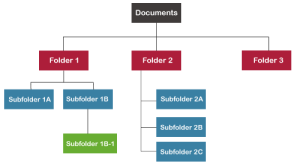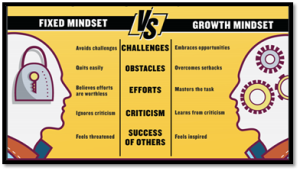Strategies for Success in the Virtual Classroom
By: Alyssa Jairam

Since the COVID-19 pandemic, many companies and institutions have transitioned to virtual environments for conducting meetings. This shift has been particularly significant in the education sector, with many schools and tertiary institutions adopting virtual classrooms due to the flexibility and convenience offered by technological advancements, especially for those who are working and studying part-time.
A virtual classroom refers to an online learning environment that enables instructors and students to interact, communicate and collaborate from anywhere in the world, provided they have a reliable internet connection. Despite being in different locations and time zones, virtual classrooms create an experience that can make participants feel as though they are together in the same room.
Whether you are a student, educator or professional seeking to enhance your skills, success in the virtual classroom is dependent on several factors. In this blog, we will explore key strategies to thrive and be successful in the virtual classroom.
1. Establishing a Dedicated Learning Space:
One of the strategies for success in the virtual classroom is creating a designated and organized learning space. In fact, this strategy is crucial for concentration and productivity. When selecting a learning space, you should choose an area that is quiet and free from distractions. The area should also be equipped with the necessary tools, such as a computer, headphones, a reliable internet connection, power outlets (so that you can easily charge your computer and other learning devices) and good lighting – to promote focus and comfort.

Figure 1: A dedicated learning space with proper lighting and free from distractions. | Source: https://indywithkids.com/
2. Practicing Time Management and Scheduling:
Effective time management is essential in the virtual classroom. Develop a daily or weekly schedule that includes dedicated study or class times, a period for completing assignments, breaks, and any other commitments. Ensure that you stick to your schedule to build a routine that fosters both consistency and productivity.
3. Active Participation:
While enrolled in an online course, you should actively participate in virtual discussions, forums, and other collaborative activities. Engaging in class discussions, asking questions, and sharing insights can enrich your learning experience, and help you build a sense of community. Additionally, engaging actively with your learning material will enhance your understanding and retention of the information.
4. Effective Communication:
In the virtual classroom, clear communication is a key feature for success. Be proactive by reaching out to your instructor and classmates if you have questions or need clarification. Note: If you are shy, you can utilize communication tools such as emails or discussion forums, when reaching out to others. Remember – effective communication is a two-way street, as such, be prepared to listen actively and respond thoughtfully.

Figure 2: A student asking a question in a virtual classroom. | Source: https://i4cp.com/
5. Utilizing Technology:
Become proficient in the technology platforms and tools used in your virtual classroom. Whether it is a video conferencing software, a collaboration tool or an LMS (Learning Management System), ensure that you understand how to navigate the platform to further enhance your overall learning experience. You can also explore additional resources and apps that would complement your learning, understanding and completion of your assignments. For an idea of what resources you can tap into, check out our blog post “Must Have Tools for Prospective Online Learners”.
6. Staying Organized:
Maintain a digital or physical organizational system for your class materials, assignments and deadlines. Virtual learning often involves managing various digital files, so keeping everything organized will help reduce stress and ensure that you stay on top of your responsibilities.

Figure 3: A flow chart of how you can organize your digital class materials into different folders. | Source: https://www.javatpoint.com/
7. Enforcing Self-Discipline and Motivation:
One of the main challenges in virtual classrooms is the potential for distractions. To stay focused on your studies, develop strong self-discipline and motivation. You can use the ‘spotlight’ option during virtual classes to ensure that you focus only your instructor, especially if the other students are distracting. Additionally, you can motivate yourself by setting goals, breaking them into smaller tasks, and rewarding yourself upon completion of each task. By fostering a motivating environment, you can significantly boost your success in the virtual classroom.
8. Embracing a Mindset for Growth:
Approach virtual learning with a growth mindset and understand that challenges can be viewed as opportunities for learning and improvement. Embrace the learning process by being open to feedback and viewing any setback as a stepping stone towards success.

Figure 4: Fixed Mindset vs Growth Mindset. | Source: https://www.armyresilience.army.mil
Conclusion:
Success in the virtual classroom requires a combination of effective strategies, technological literacy and a proactive mindset. By creating a conducive learning environment, managing your time wisely, actively participating in discussions, and embracing the advantages of technology, you can thrive and be successful in the virtual learning landscape. Virtual classrooms will continue to evolve, therefore, adaptation of these strategies will contribute to your academic success and prepare you for a dynamic digital future.
